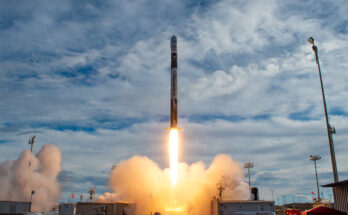
The failure of Vega C in December 2022 has resulted in the return of the ancestor Vega. Although not unheard of, generally speaking, launch vehicles tend to technologically progress rather than revert to former models. Failures to orbit are common in the launch vehicle industry and Vega C is currently scheduled to fly again at the end of 2024.
The Vega family is used to launch both commercial and civil payloads to orbit. The Vega rocket is a four-stage, solid-propellant (three lower stages), liquid-fueled (fourth stage) lightweight launch vehicle. The Vega C is an improved version that increases payload capacity to 2,300 kilograms from 1,500. This is accomplished primarily through the use of new rocket motors. The first stage P80FW has been replaced with the P120C, which will also be used on Ariane 6 side-mounted solid rocket boosters. The second stage Z23 motor has been replaced with the Z40.
The Zefiro 40 (Z40) solid rocket motor was the culprit of the launch failure in 2022. Unfortunately, tests performed regarding the investigation into the failure came back with the result that the Zefiro nozzle will need a redesign. This is not a quick fix and therefore Vega has come from the bench to fill in for its successor.
Before it is retired, there will be one more launch of Vega in early-to-mid 2024. Setbacks are common and Avio, the prime manufacturer, is sure to be working hard on returning Vega C to flight.
Carter Palmer has long held a keen interest in military matters and aviation. As a FI's space systems analyst he is responsible for updating the reports and analyses within the Space Systems Forecast – Launch Vehicles & Manned Platforms and Space Systems Forecast – Satellites & Spacecraft products.




